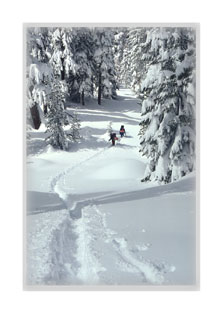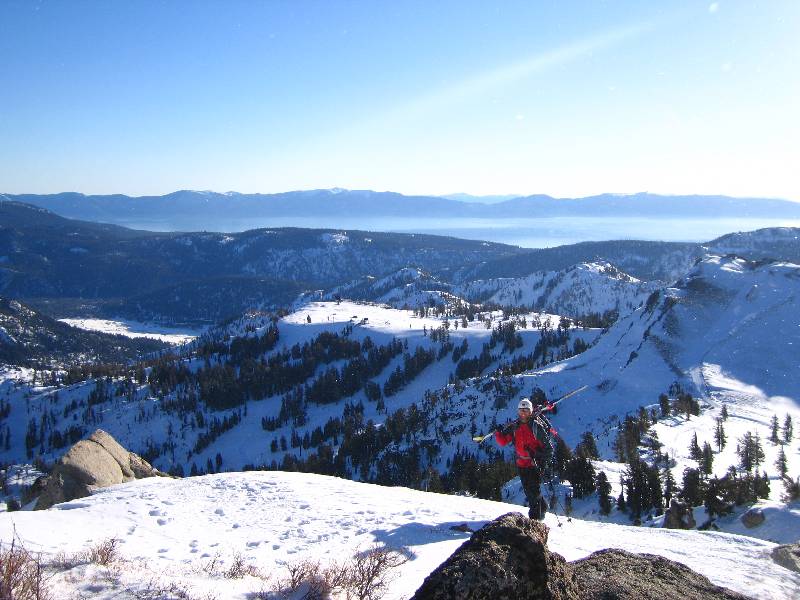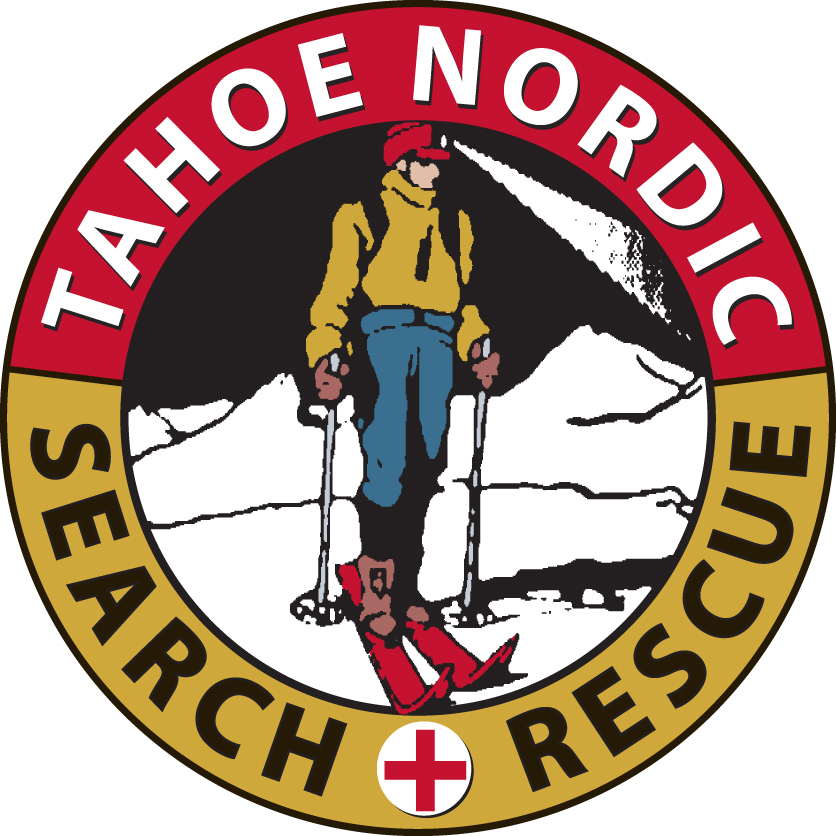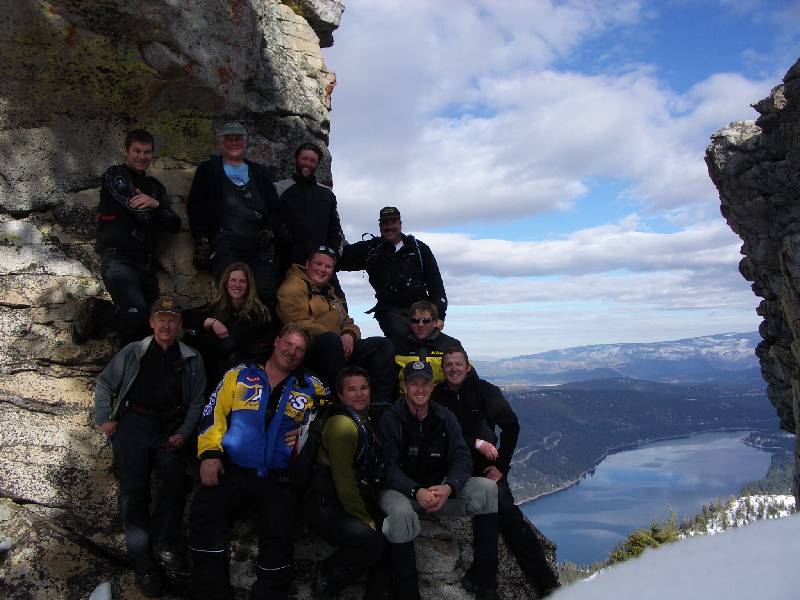A Guide to Winter Preparedness and Survival

We often hear about skiers, hunters, and snowmobilers lost or injured in the winter wilderness who become the victims of tragedy. Most, if not all, of these situations could have been avoided had the victims been "Winter Aware", that is, knowing about winter preparedness and being able to successfully deal with the winter environment. Whether you're a downhill skier, cross-country skier, snowboarder, or other outdoor enthusiast, be prepared and carry the tools for survival. BEFORE YOU GO... Check the weather forecast. Television, radio, and the Forest Service have weather and snow reports. Know what conditions exist where you're going and be aware that weather can change rapidly in the mountains.
Check your Equipment: Is everything in good repair? Waterproof your boots, examine skis and bindings for loose screws, delamination, or other problems. Items that might be included in your daypack or fannypack are sunscreen, lip balm, sunglasses or goggles, and a basic first aid kit. The first aid kit may include Band-Aids, aspirin, cravats, tape, moleskin, safety pins, and a Swiss Army knife. An ensolite pad is also useful, as it provides good insulation from the snow.
A Survival Kit is a must! Include: Two large plastic leaf bags (to be used as a poncho or emergency shelter in bad weather), waterproof matches, plastic whistle (three short blasts means help), candle, metal cup for melting snow, duct tape (for repairs, can be wrapped around the top of a ski pole), cocoa or other powdered mix, and a couple of quarters for emergency phone calls. Dress in layers; this will keep you warm and dry.
Dress for changeable weather, bring more clothes than you think you need for layering:
- Wicking Layer. This layer should pass moisture away from your skin. Polypropylene or wool undergarments give you a dry layer next to your skin for more warmth. Don't wear cotton, cotton is cold when wet and very slow to dry.
- Insulating Layer (middle layer): Polyester pile, fiberfill, wool, thinsulate, etc. are materials that will keep you warm and dry quickly. Down is a good insulator, but unprotected down will wet quickly and is slow to dry.
- Protective Layer: Keeps wind, rain and snow out. Rain gear should be large enough to fit over all your clothes and should have a hood. A wool or polar fleece hat is a must! 40 to 75 percent of your body heat is lost through the head.
- Gloves: To keep your hands warm and dry, wear polypropylene liners underneath mittens. Carry a pair of waterproof overmitts. Mittens are warmer than gloves.
- Feet: Dress in layers here too! A liner, then a thick wool sock and correctly fitted boots keep your feet warm and comfortable and prevent boot friction; also wear gaitors.
Do Not Drink Alcoholic Beverages! Alcohol impairs judgment and opens blood vessels at the extremities, allowing blood to cool. This can lower your body's internal temperature.
Before your trip tell a responsible person the Three W's: WHERE you are going. Do you have maps of the area? WHEN you are returning (day and time). WHO you are going with (Never ski alone. Stay together.). WHERE WHEN WHO. This is essential information in the event a search is started. WHEN YOU GO... Map and compass, be familiar with the area you are entering. Carry and know how to use both map and compass. Trust your compass reading. Constant observation, be winter aware of the weather. People get lost most often during storms. Observe the weather (sun, clouds, winds) and snow conditions (powder, crust, ice) . These can dictate the length of a trip or where to ski. Continually check your surroundings, observe familiar peaks, creeks, and other landmarks that will allow you to get back to your starting point. Personal observation, how are you or those in your party feeling? Is everyone dressed properly? Does gear fit correctly? Is anyone hungry, wet, or tired? Plan the day's skiing to accommodate the lowest skiing ability in the group. Be willing to cancel the trip if dictated by weather or other conditions.
Obey Ski Area Signs. These are for your well-being. Ski in-bounds only. Get an area map. Tell family/friends where you'll be skiing and when you'll meet them. Be aware, ski with care. Most winter backcountry searches are for downhill skiers or snowboarders who have skied out of bounds. Ration your sweat, not your water - drink often. Hot soup or tea on a cold day is a pleasure; think about carrying a thermos.
Water gathering techniques: Melt snow in black plastic; refill half full water bottles with snow and shake bottle vigorously; if near a creek, pack ski pole baskets with snow and dip in water it saturates snow like a snow cone and keeps you from falling into the creek. If you become wet, your body can lose heat 25 times faster than if you're dry. Don't eat snow, crust or ice - especially if tired, cold, unhealthy, or injured. It takes too much energy to convert snow to water and it cools the body internally.
Recognize and Avoid Snow Avalanche Terrain. Most avalanches that bury people are triggered by those people. The main causes of avalanches are people entering an avalanche zone and/or new snowfall. Learn to be "Avalanche Aware". Call your avalanche hotline or avalanche forecaster for current, local conditions. Avoid all avalanche terrain during periods of unstable snow. Many but not all avalanches occur during or immediately after a storm and on slopes 30 degrees or steeper. Deep and unstable snow tends to accumulate on the lee side of mountains and in gullies. Learn to recognize and avoid snow avalanche terrain. Also, be aware of snow- and ice-covered streams and lakes. Crossing these can be dangerous.
IN CASE OF AN EMERGENCY...When in an emergent situation, such as becoming lost, injured, fatigued or experiencing equipment failure, remember...S.T.O.P. S...Stay put (if in a safe place). The farther you go, the longer it will take searchers to find you. T...Think/Evaluate your options. What about the others in your party - is everyone prepared? What can you do to remedy the situation? O...Observe/Look around you and use what you see to help the situation. Check your surroundings and your equipment. P...Plan/Formulate a plan of action. Stopping and implementing a plan will help you to control fear and to avoid panic. Remain calm even if things aren't going quite to plan. Control your thoughts. THINK POSITIVE. Your situation is only temporary. If you do get anxious, breathe deeply, hold onto something, hug-a-tree, talk to yourself and keep yourself busy.
IF YOU DO BECOME LOST... Stop & Stay where you are. Make a shelter. It should protect you from wind, rain, snow and avalanche. Build them small, as large shelters require more time and effort. Use materials at hand (tarps, ropes, garbage bags, bark, branches, ice, crust, etc. Improvise.). Emergency shelters are easy to build, but take time and effort. Do whatever is necessary to keep warm and dry. A tree is the best type of shelter since it is already half built. Select a tree well that is out of the wind and has limbs drooping to the snow. Add more limbs, bark, tarp, garbage bags or slabs of snow for the roof and build up snow for the sides. Insulate the floor with boughs, pack, etc. Keep off the snow. Face the shelter's entrance east for morning sun and don't hide form search parties. Trenches, fallen trees, rock outcroppings and caves also offer protection.
Make signals to help others find you! Cross your skis, poles and stamp out a trail in four directions from your shelter. Also, stamp SOS in the snow. Any signal in three's (such as shouting or whistling) means emergency. Fires create smoke in the daytime and a light source at night. Don't waste energy or get wet. Try to make yourself big and obvious to searchers.
IN THE EVENT OF AN INJURY- Monitor breathing. Keep the airway open.
- Check for heart beat. Is CPR required?
- Check for bleeding. Usually the most effective way to stop bleeding is direct pressure on the wound and elevation above the heart.
- Keep the victim warm, dry and out of the wind. Treat for shock.
- Immobilize broken or badly sprained limbs.
- Seek help. HYPOTHERMIA IS A DEADLY CONDITION...Hypothermia is a lowering
of the core temperature of the body. It is easier to prevent hypothermia than
to treat it in the field.
- Wear proper clothing, dress in layers.
- Stay dry. Wet clothes, especially cotton, are useless. Don't get caught wearing killer jeans. Wear a wool hat.
- Eat high energy foods and drink plenty of liquids.
- Do not become overly fatigued, rest often.
The warning signs of hypothermia are:- Shivering.
- Loss of coordination and the ability to do simple tasks.
- Disoriented or confused attitude.
As one of the symptoms of hypothermia is a reduction of mental ability, you may not notice the onset in yourself. It is very important to carefully observe the others in your party. IF LEFT UNTREATED, HYPOTHERMIA WILL KILL...Treatment of Hypothermia:
- Get the victim out of the wind and elements.
- Prevent heat loss by getting the victim in warm, dry clothes (your own if necessary) or a pre-warmed sleeping bag. Get into the bag with the victim (both unclothed). Insulate the victim from the ground.
- Give warm liquids and sugars/carbohydrates for food.
- Continually assess their condition.
ADDITIONAL INFORMATION...The preceding information contains many useful tips. You should, however, prepare a check list tailored to your specific activity and to your personal needs. Remember: Downhill skiers should carry a survival kit, hat, gloves, sunglasses, sunscreen, and a candy bar. Snowmobilers should carry goggles, a basic tool kit, and spare parts. As your level of activity in the winter environment increases, you may want to improve your techniques and knowledge.
Further information can be obtained from the following texts:
- Map & Compass - Be an Expert With Map and Compass by Bjorn Kjelstrom.
- Avalanches -
- Avalanche Handbook by Ronald Perla
- ABC's of Avalanche Safety by Edward La Chapelle
- The Avalanche Book by Betsy R. Armstrong.
- Winter Survival -
- Tom Brown Jr.'s Field Guide to Wilderness Survival by Tom Brown Jr.
- Surviving the Unexpected Wilderness Emergency by Gene Fear.
- First Aid -
- American Red Cross Advanced First Aid & Emergency Care
- Medicine for Mountaineering by James R. Wilkerson, M.D.
- Hypothermia, Frostbite and Other Cold Injuries by Wilkerson, Bangs and Hayward
- Medicine for the Outdoors by Paul S. Auerbach, M.D.
P.O. Box 7703, Tahoe City, CA 96145
non-profit tax ID #94-2737988
© 1995 Tahoe Nordic Search and Rescue Team, Inc. Winter Awareness
Randall S. Osterhuber


